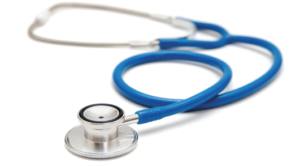Ghana launches Trauma Care Checklist for effective service delivery
 The Ghana Health Service (GHS) on Monday launched the World Health Organisation’s Trauma Care Checklist to be integrated into emergency service delivery in all healthcare facilities across the country.
The Ghana Health Service (GHS) on Monday launched the World Health Organisation’s Trauma Care Checklist to be integrated into emergency service delivery in all healthcare facilities across the country.
The Trauma Care Checklist, which is a simple tool designed for use in emergency units, and emphasizes the key life-saving elements of initial trauma care, is developed to help improve the quality of services offered in health facilities, save lives and prevent disabilities in patients.
Dr Anthony Nsiah-Asare, the Director-General of the Ghana Health Service, who launched the tool in Accra, said although true that timely emergency care saves lives and reduces disability, there was currently a great global disparity in access to emergency care.
He indicated that injury was responsible for more than 10 per cent of the global burden of diseases, killing more people each year than HIV, malaria and tuberculosis combined, and more than 90 per cent of those deaths occurred in low and middle-income countries.
If fatality rates from severe injury were the same in low and middle-income countries as they were in high-income countries, between 1.5 and two million lives could be saved every year, he said.
Dr Nsiah-Asare said the checklist, therefore, reviewed key actions at two points, which involved immediately after the ‘primary’ and ‘secondary’ surveys, and before the health team leaves the patient’s bedside.
He commended the Ministry of Health, the AO Alliance, an International NGO, and the Ghana College of Physicians and Surgeons, for the collaborative launch of the tool, saying it would help strengthen partnership at all levels of the health sector for sustained implementation as soon as possible.
With the tool, a systematic approach to every injured person ensured that life-saving interventions were performed to ensure that no life-threatening conditions were missed, he said.
Dr Nsiah-Asare, however, said the GHS had already put in place lots of measures to improve emergency care, and the introduction and use of Trauma Care Checklist was one of such actions to complement existing services.
The Service, he said, was looking forward to agencies and partners of Health to come on board and support in the roll over and train health personnel across the country for the effective implementation and use of the tool.
Dr Wilfred Addo, the Representative of AO Alliance, for English Speaking Africa, lauded the GHS for the initiative to integrate the use of the tool into emergency care as early as possible to improve care of patients.
He explained that although the WHO Trauma Care Checklist was first launched in August 2016 at the World Trauma Congress in New Delhi, India, and has been effectively used in countries including Canada, Colombia, Viet Nam, Rwanda, Australia, Thailand and Pakistan, it was adopted and further developed by the AO Alliance to suit the African contextual needs.
The tool was developed and validated through a large global collaboration, review actions at two critical points to ensure that no life-threatening conditions were missed and timely, life-saving interventions were performed, he said.
He said the tool was, therefore, appropriate in any setting delivering emergency care for the injured and could be easily adopted to local needs.
Source: GNA
